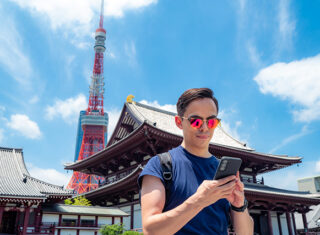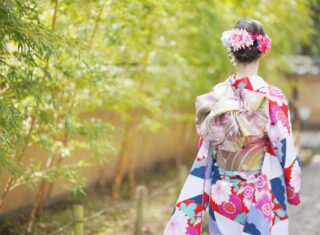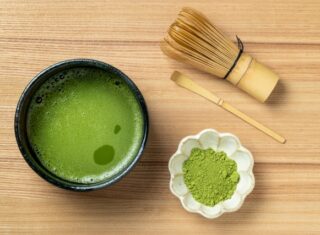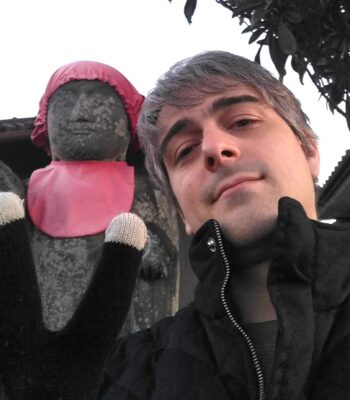- Learning Japanese
- Japanese Culture
What Kind of People Are Maiko in Japan? Explaining the Differences from Geiko and the Traditional Ozashiki-asobi
2025.10.28
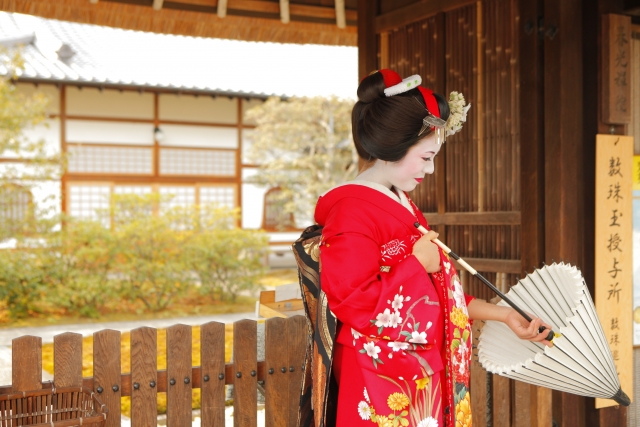
Imagine walking down a quiet street in Kyoto’s Gion district at dusk. The faint sound of shamisen drifts through the air — and then, a figure in a brilliant kimono passes by, her white makeup softly glowing in the lantern light.
She is a maiko (舞妓) — a living symbol of Kyoto’s elegance and artistry.
Many people recognize the maiko by her iconic appearance, but few know about her daily life, training, and deep connection to Japan’s traditional culture.
In this article, we’ll explore who the maiko truly are, how they differ from geiko (芸妓), and the captivating world of ozashiki-asobi (お座敷遊び) — traditional parlor games enjoyed together with maiko.
We’ll also introduce ways to experience this culture yourself, along with important etiquette tips to help you appreciate the maiko’s artistry with genuine respect.
What Are Maiko (舞妓) in Japan?
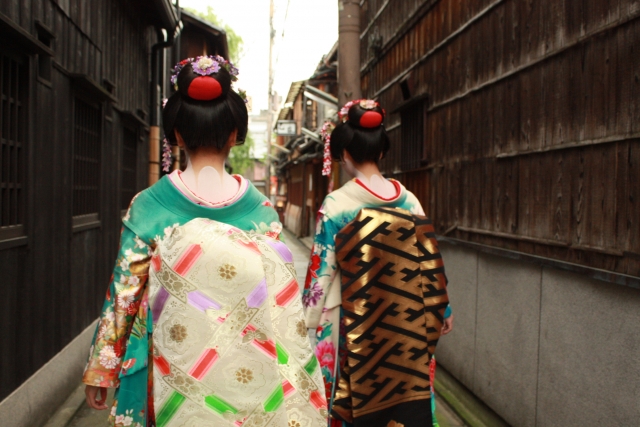
Maiko (舞妓) in Japan refers to young women who entertain by performing traditional arts at ochaya (teahouses) and festival occasions.
The traditional performing arts of maiko, which are a part of Kyoto’s cultural heritage, include uta (唄 / singing), buyō (舞踊 / classical dance), shamisen (三味線), and sadō (茶道 / tea ceremony). Because of these arts and their artistic appearance, they are also praised as “walking works of art.”
Maiko are not only visually elegant but are also professionals of hospitality who undergo strict training in language use, etiquette, and manners.
The History of Maiko
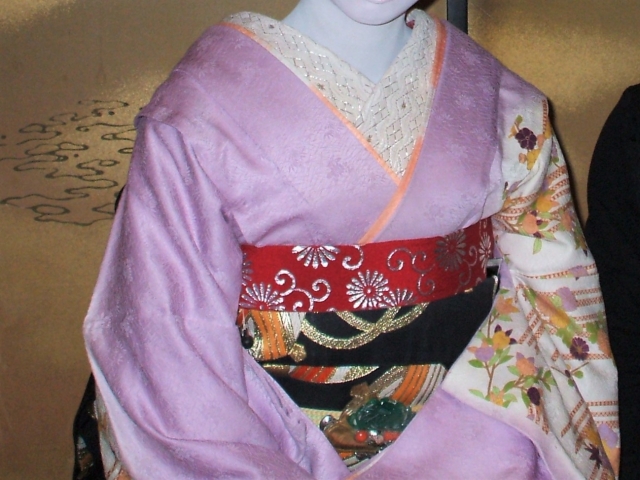
The origin of maiko is said to trace back about 300 years to the mid-Edo period, beginning with young women who worked at mizucha-ya (water teahouses) serving tea and dumplings.
At that time, they would serve tea to worshippers visiting Yasaka Shrine and Kitano Tenmangū, but later they began serving alcohol and, in order to entertain customers, came to perform songs and dancing.
Due to the ordinance prohibiting luxury (shashi kinshirei / 奢侈禁止令), their clothing was modest at the time, but during the Meiji era, when more lavish clothing was allowed again, their costumes and hairstyles also became more ornate and charming.
Maiko came to serve as a symbol of Kyoto, attracting attention from overseas as well. By the late Meiji era, even international celebrities such as Charlie Chaplin viewed maiko performances when visiting Kyoto.
Differences Between Maiko (舞妓) and Geiko (芸妓)

There are several differences between maiko and geiko, as outlined below.
|
Maiko (舞妓) |
|
|
Geiko (芸妓) |
|
Maiko live in okiya, which are similar to performing arts houses, whereas geiko live independently in their own accommodations while working.
The Clothing, Makeup, and Hairstyles of Maiko
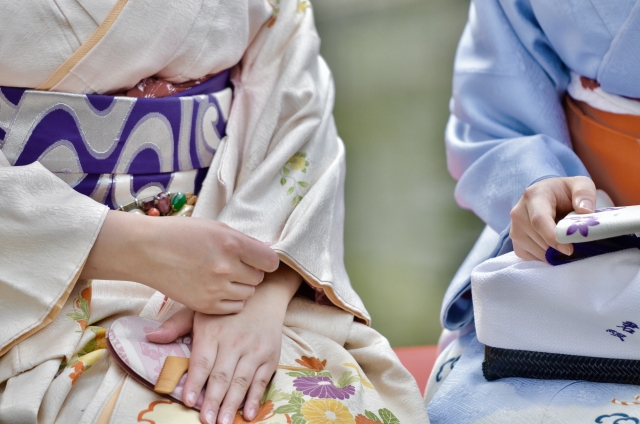
The characteristics of a maiko’s clothing, makeup, and hairstyle are summarized in the following tables.
|
Clothing |
|
|
Makeup |
|
|
Hairstyles |
|
As seen above, the clothing, makeup, and hairstyles of maiko all embody the traditional beauty of Kyoto and are carefully designed to express youthful charm.
★Also try reading:
Deepen Your Understanding of Japanese Culture and Traditions! A Detailed Guide to 12 Iconic Traditions
The Training to Become a Maiko

There are three main stages of training to become a maiko:
- Shikomi (仕込み / apprenticeship)
- Minarai (見習い / observership)
- Misedashi (店出し / formal debut)
During the shikomi period, the apprentice lives in the okiya for about ten months, receiving strict training from senior maiko and the okāsan (the proprietress), learning Kyoto kagai (花街) language, manners, assisting seniors, doing cleaning work, and practicing dance.
Once the okāsan acknowledges her suitability, she enters the minarai stage for about a month, apprenticing under a senior geiko with whom she has exchanged ceremonial cups of sisterhood.
After learning in real settings, she enters misedashi, a three-day debut period as a maiko, during which she visits ochaya in formal black-crested kimono under the guidance of senior geiko.
What Kind of Neighborhoods Do Maiko Live In?
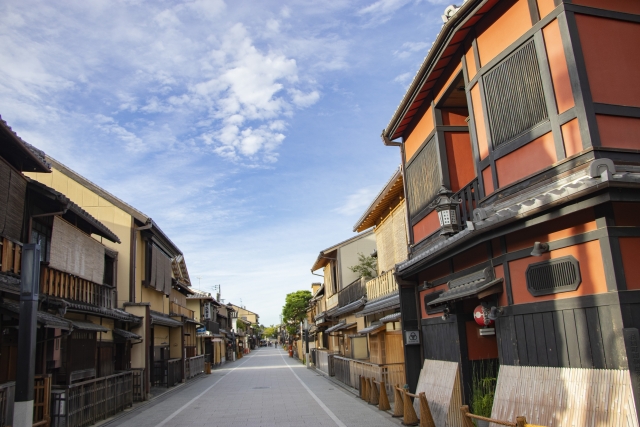
Maiko live in special cultural districts in Kyoto known as hanamachi (花街). There are five hanamachi in Kyoto:
- Gion Kōbu (祇園甲部)
- Miyagawa-chō (宮川町)
- Pontochō (先斗町)
- Kamishichiken (上七軒)
- Gion Higashi (祇園東)
Within the hanamachi, there are facilities such as:
|
Facility |
Role |
|
Ochaya (お茶屋) |
A place where guests are entertained |
|
Okiya (置屋) |
Where maiko live |
|
Kaburenjō (歌舞練場) |
A venue for performing song and dance |
Many master artisans and teachers of traditional performing arts also gather in the hanamachi, helping to sustain Kyoto’s cultural vitality through the support of maiko and their community.
What Is Ozashiki-asobi (お座敷遊び)?
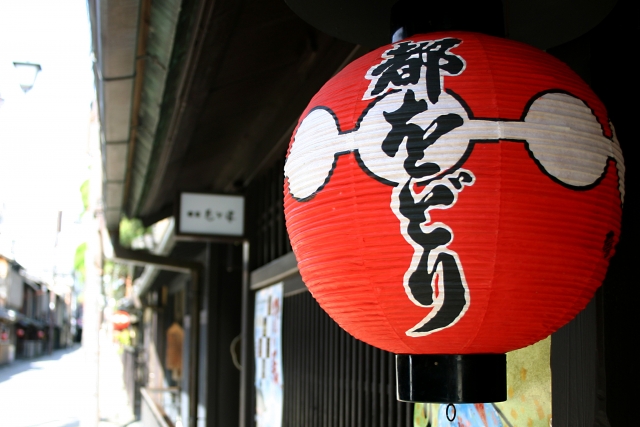
Ozashiki-asobi refers to the traditional entertainment enjoyed in ochaya within the hanamachi.
During ozashiki-asobi, guests enjoy watching the dances of maiko and geiko, conversing with them, and participating with them in traditional party games.
Typical ozashiki-asobi games include:
- Toratora (とらとら):A rock-paper-scissors style gesture game using the characters “Watonai,” “Tiger,” and “Old Woman.”
- Mugi-tsunde (麦つんで):Guests pass a coin while singing to shamisen accompaniment, and must guess who holds the coin
- Tōsenkyō (投扇興):A game where an open folding fan is thrown at a target
How to Experience Ozashiki-asobi With Maiko
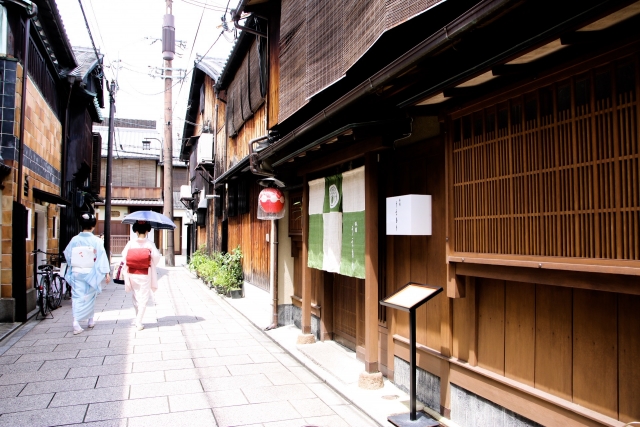
First-time visitors (ichigen-san) cannot usually enter ochaya directly.
However, some ryotei (traditional restaurants) offer ozashiki-taiken (お座敷体験), where even first-time guests may enjoy ozashiki-asobi. This makes it a suitable experience for those sightseeing in Kyoto.
The usual price for such an experience, including the maiko’s appearance fee and the meal, begins from around 70,000 yen.
Important Things to Keep in Mind When Wanting to “See a Maiko in Japan”
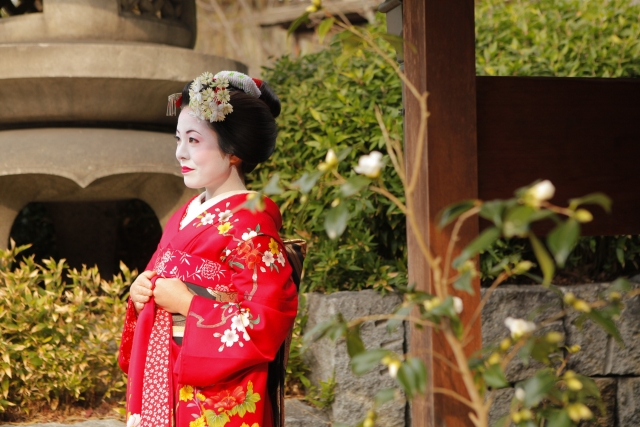
There are two important points to be aware of when visiting Kyoto with the intention of seeing a maiko:
- The chance of meeting a real maiko on the street is very low
- When participating in ozashiki-asobi, manners must be observed
Here, we will explain the above two points of caution in more detail.
The Chance of Meeting a Real Maiko on the Street Is Low
Even if you visit Kyoto hoping to see a maiko, the likelihood of accidentally encountering a real one on the street is quite low.
Even if someone waits for an hour on a street where maiko might pass, in most cases they will not appear — and many of those seen are tourists dressed as maiko rather than actual performers.
Even if one does happen to see a real maiko moving between venues, she is often walking quickly on her way to work, and calling out to her or taking photographs is considered poor manners.
Manners When Participating in Ozashiki-asobi
There are several manners that must be observed during ozashiki-asobi, including:
- Do not offer food or alcohol to the maiko
- Stop eating once a performance begins
- Dress formally
- Do not step on thresholds or the edges of tatami
- Do not touch the kimono or accessories of the maiko
Even as a tourist, one is expected to dress in a manner as formal as possible before participating.
★Also try reading:
14 Historic Landmarks to Visit During Your Trip to Japan
Summary: What Are Maiko (舞妓) in Japan?
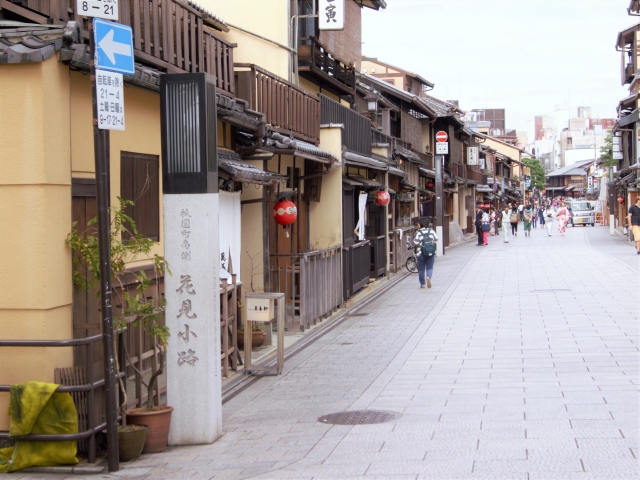
In this article, we introduced what kind of people maiko (舞妓) in Japan are, how they differ from geiko (芸妓), and the traditional games known as ozashiki-asobi (お座敷遊び).
If you wish to “learn about Japanese culture and also be able to speak Japanese,” why not study Japanese through the online lessons of Oku Sensei’s Japanese?
At Oku Sensei’s Japanese, Oku Sensei — who has more than 20 years of teaching experience at universities across the United States — supports learners in mastering practical Japanese enjoyably and efficiently, so even complete beginners can feel at ease.
At present, Oku Sensei’s Japanese is offering a 30-minute free consultation, so please feel free to check it out.




